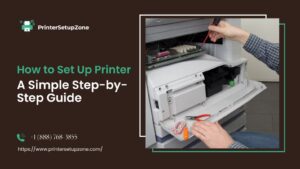
With the growing adoption of electric vehicles (EVs), many homeowners are considering installing EV chargers at home. It’s convenient, efficient, and often more affordable in the long run. But while the hardware and tech might seem straightforward, one critical step is often overlooked: the permit for EV charger installation.
Whether you’re hiring a professional or considering a DIY route, skipping the permit process can lead to safety issues, legal trouble, and unexpected costs. Here’s why getting the proper approvals isn’t just a formality—it’s essential for doing things right.
Why Permits Matter for EV Charger Installation
Many cities and municipalities require a permit before you install any electrical equipment—especially something as powerful as an EV charger. Here’s why:
- Safety first: Permits ensure that the electrical work meets current safety codes and won’t put your home or vehicle at risk.
- Grid compatibility: EV chargers demand a significant power draw. A permit review confirms your system can handle the load.
- Resale value: If you sell your home, unpermitted electrical installations can hold up the process or lower your home’s value.
- Avoiding penalties: Installing an EV charger without a permit may result in fines or a forced removal, especially if discovered during inspection or insurance reviews.
In short, a permit isn’t just paperwork—it’s protection.
What Is the Permit Process Like?
While it varies by location, the basic steps of getting a permit for your EV charger generally look like this:
- Plan your installation: Decide whether it’s Level 1 (standard outlet) or Level 2 (240V charger) and assess your home’s electrical capacity.
- Submit permit application: Your installer—or you, if doing it yourself—applies through your local building department.
- Review and approval: The application is reviewed to ensure compliance with local building and electrical codes.
- Inspection: After installation, an inspector checks the work to ensure everything is safe and up to code.
Working with a solar permit design company or certified EV installer can help simplify the entire process.
DIY or Professional Installer: Does It Make a Difference?
Technically, homeowners can apply for and complete EV charger installations themselves. But doing so comes with risks:
- You need to understand your local electrical code.
- Mistakes can damage your system or void your warranty.
- Some cities only issue permits to licensed professionals.
If you’re unfamiliar with electrical systems, hiring a professional ensures the work is done correctly—and they’ll usually handle the permit too.
Cost of Permitting an EV Charger
Permit fees depend on your city or county, ranging from ₹500 to ₹5,000 or more. That might sound like an unnecessary extra, but when compared to:
- The cost of rewiring due to improper setup
- Fines for unauthorized installation
- Safety risks from overloads or shorts
…it’s a smart investment.
A professional solar permit design company can help you estimate these costs upfront, often bundling them into the installation price.
Common Mistakes to Avoid
Here are a few things people often overlook when installing EV chargers:
- Skipping the permit entirely: This is the most common and costly mistake.
- Upgrading your panel without approval: Any panel upgrade typically needs a permit too.
- Installing in the wrong location: Charger placement matters for accessibility, drainage, and fire safety.
- Not checking HOA or apartment rules: If you live in a shared building, extra permissions may be needed.
Being thorough from the beginning prevents future hassles.
What If You Already Installed Without a Permit?
It’s not ideal, but it can be fixed. Here’s what to do:
- Stop using the charger immediately.
- Contact your local building department and explain the situation.
- Request a retroactive permit and inspection. This may involve some rework.
- Document everything, especially if you plan to sell or rent your property in the future.
Fixing it early can save you from fines or bigger expenses down the line.
Permits and Solar Integration
If you’re also using solar panels at home, your EV charger can be integrated into that system. In this case, both systems may require coordinated permitting:
- Solar permit for panel installation
- Electrical permit for the charger
- Interconnection approval if your system feeds back into the grid
This is where working with a professional service provider becomes essential. Companies like SunGrid Systems handle the entire solar and EV charging permit process, ensuring you’re covered on all fronts.
Final Thoughts
Installing an EV charger at home is a smart, future-forward choice. But convenience shouldn’t come at the cost of compliance. The permit for EV charger installation is a crucial part of the process that ensures your home, your car, and your investment are safe and up to standard.
Don’t let paperwork be an afterthought. Start your EV journey with the confidence that everything’s done right—legally, safely, and efficiently.
SunGrid Systems helps homeowners and businesses navigate EV charger permits, solar design, and grid integration. With deep experience in compliance and local codes, they simplify the process so you can focus on what matters: cleaner, smarter energy use.






